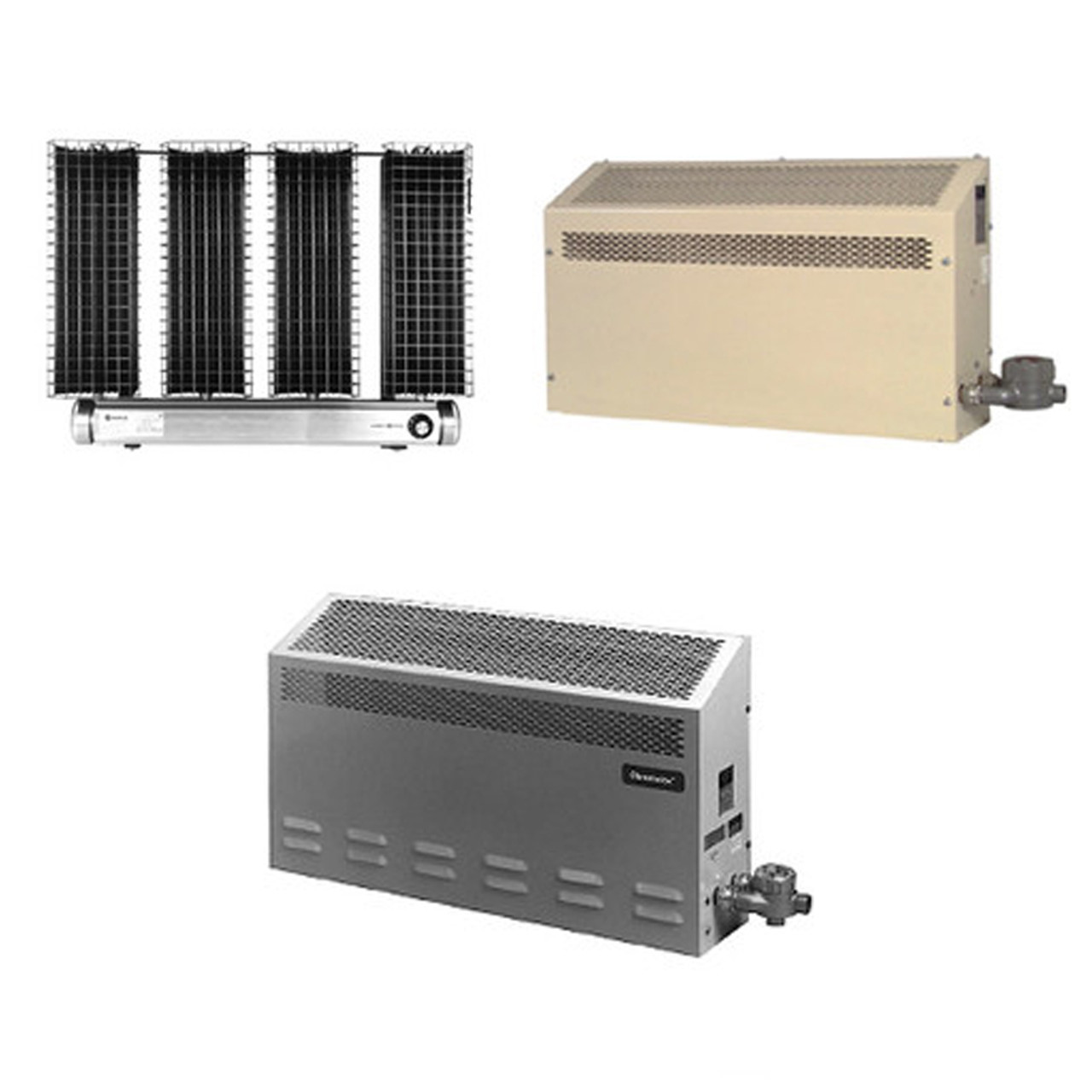About Our Explosion Proof Convectors
Your first consideration is whether your convector is approved for Class III, Class II, or Class I divisions. With hundreds of models in a range of sizes and mounting options, you can find one that's right for your application.
These units come with features like heavy-gauge steel cabinets, sealed heating elements, polyester powder coating for corrosion resistance, mounting brackets, and sloped-top cabinets to ensure nothing can be accidentally placed on top of the unit that would restrict airflow. Some units have optional factory-installed thermostats. It's important to note that some models are rated for a maximum ambient temperature of 40° C (104° F); if this is a concern in your facility, you'll want to double-check that rating for your heater.
Manufacturers like Ruffneck, Qmark, Markel, Norseman, Chromalox, and Berko understand the diverse heating needs in hazardous locations, and they make explosion-proof convectors as compact as possible while giving you options for power output, mounting locations, and more. With hundreds of units in our inventory, you're bound to find the one you need. You'll have access to all the information we have about each heater, including product literature like catalogs and installation guides, photos and descriptions, availability and lead time, and low, factory-direct pricing on new convectors (never used or refurbished).
With electric explosion-proof convectors, it's essential to ensure that your electrical service meets the voltage and amp draw of the heater, and we'll ask you to confirm that before you check out. Many of these orders cannot be canceled or returned. Please contact us if you have questions about your chosen model. Our friendly customer care team is happy to help—it's part of our commitment to ensuring you receive the HVAC products and replacement parts you need as quickly as possible.
To that end, we also offer fast, free shipping on every order in the lower 48 states, and we combine it with special pricing on bulk orders. Please contact us before placing a high-volume order.
Whether you're looking for an industrial explosion-proof convector for your paint booth, control cabinet, pump house, petroleum plant, fueling area, sewage treatment facility, or any other hazardous location, you'll find it at NorthStock. As a leading HVAC distributor, we have an unparalleled inventory of heating, cooling, and ventilation solutions for commercial and industrial applications, and our long-standing relationships with the industry's top manufacturers allow us to offer fast service and competitive prices. Contact us to learn more about our explosion-proof convectors or place your order today.
